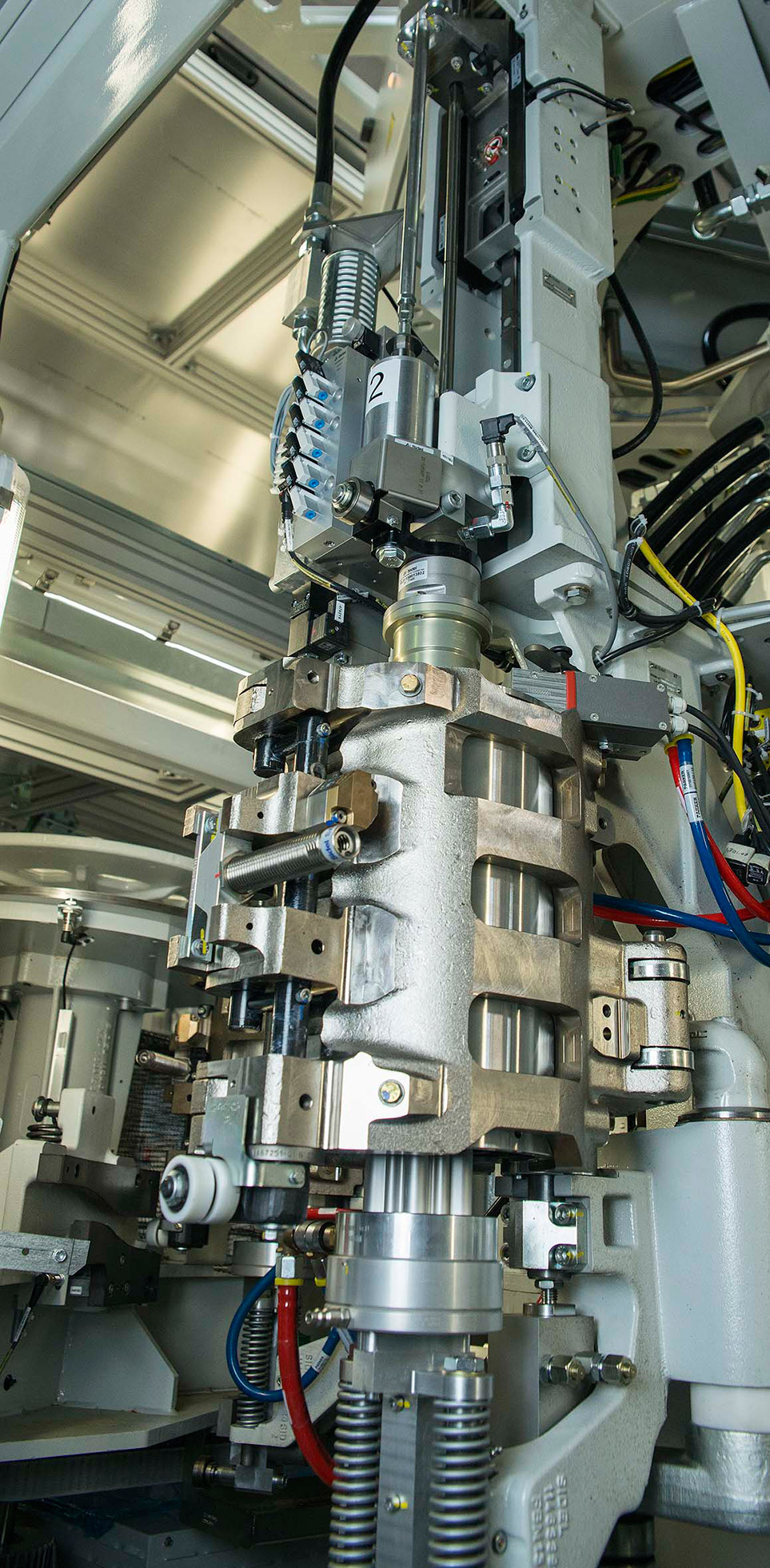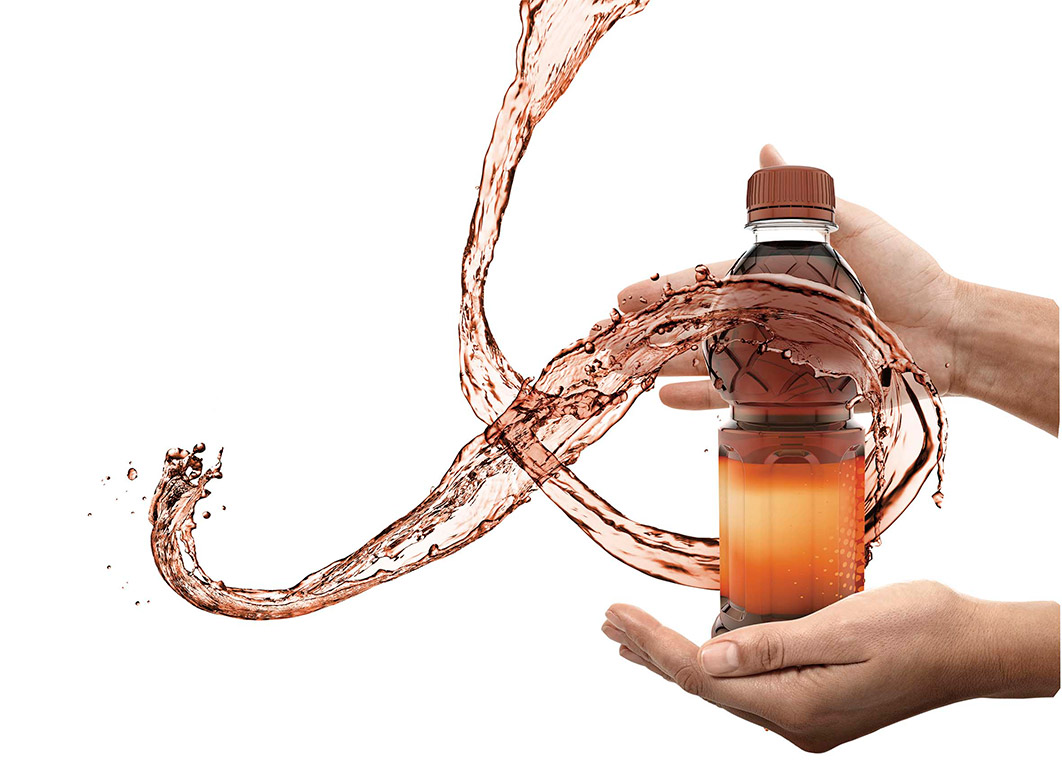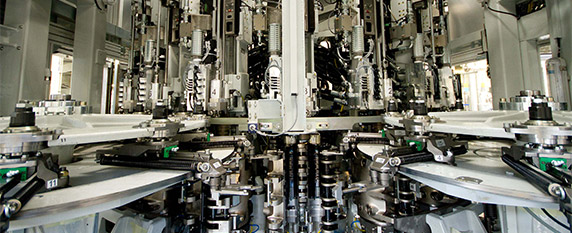04/11/2015
By heating the mould via electrical heat resistance (eHR) instead of hot oil, the Sidel Matrix blower eHR achieves various benefits in terms of bottle quality, performance, process flexibility, uptime, energy savings and operator safety.
Enhancing consistent performance, saving energy
Sidel's eHR electrical heating replaces traditional heating of the mould for the PET bottle body by oil. Very responsive, it creates a temperature increase three times quicker than heating by oil, accurately providing the correct temperatures from the first bottles produced. Probes are directly located in each mould shell to regulate the temperature as closely as possible to the PET bottle as it is formed. Temperature discrepancies between different blowing stations are kept to an absolute minimum. As a result, all bottles undergo the same thermal conditioning and therefore offer a consistent performance when placed on the supermarket shelf and when in the hands of the consumer.
The latest generation of blowing valve on the Sidel Matrix blower, combined with the mechanical blow nozzle system, electrical stretching and automation, gives high control of the blowing curve. This allows mechanical output to be increased by up to 2,000 bottles per hour per mould representing a speed improvement of more than 10% compared with the previous generation of Sidel HR blowers. At the same time, it still maintains enough cycle time to ensure a consistent blowing process.
Electrical heating also offers energy savings of up to 45% compared with the previous generation of Sidel SBO Universal HR blowers. This is much more efficient than oil mould heating. The performance of the Sidel Matrix Ecoven with the infra-red lamps and ceramic technology reduces use of power by a further 25% and by implementing the AirEco2 air recovery option, air consumption can be reduced by up to 45%.
Hygiene and safety
 By eliminating oil altogether, the Sidel
Matrix blower eHR prevents hazards caused by leakages, such as
operators' slipping and contamination. With electrical
stretching, there is no need for lubrication above the neck of the
bottle, removing the risk of contamination. Some components
are lubricated for life and for those parts that do need
lubrication, food-grade grease is used. The Sidel Matrix
blower eHR benefits from other proven Sidel Matrix developments
such as oven ventilation with air filtration for more hygienic
production.
By eliminating oil altogether, the Sidel
Matrix blower eHR prevents hazards caused by leakages, such as
operators' slipping and contamination. With electrical
stretching, there is no need for lubrication above the neck of the
bottle, removing the risk of contamination. Some components
are lubricated for life and for those parts that do need
lubrication, food-grade grease is used. The Sidel Matrix
blower eHR benefits from other proven Sidel Matrix developments
such as oven ventilation with air filtration for more hygienic
production.
As the moulds are insulated from the mould supports, the hot temperature is focused on the moulds while the ambient temperature in the Sidel Matrix blower eHR remains lower than in a traditional HR blower. This avoids any thermal constraints on other nearby machine components. Parts that operators may come into contact with inside the machine are at a lower temperature which contributes to safer intervention conditions.
Staying ahead with innovative developments
With 35 years' PET experience, Sidel has delivered almost 560 HR blowers around the world. This know-how is complemented by its experience in the hot filling of beverages, which it started almost four decades ago, first in glass containers and then in plastic. Damien Fournier, Blowing Product Management Director at Sidel, comments - "Sidel has been a central player in the hotfill segment of the beverages market ever since the introduction of the blow moulding HR PET process in 1986 and Sidel Matrix eHR provides unique operational benefits to beverage producers."
The Sidel Matrix blower eHR combines the innovative eHR solution with the latest proven technologies of Sidel Matrix blowers. Mechanical settings are the same and 73% of the eHR blowing station components are similar to those of standard Sidel Matrix blowers. It can be combined for example with the Sidel Matrix Intelliblower™, which brings control and self-regulation to the blow moulding process, independent of any operator intervention. As it is contactless, electrical stretching is robust and gets no wear, delivering consistently high quality PET bottles and contributing to increased output.
Benefits of eHR blowing with Sidel Matrix Combi Hot Fill
 This new electrical heating resistance blowing
process is integrated into the Sidel Matrix Combi Hot Fill that
integrates the blowing, filling and capping functions in one
machine. Sidel Combi systems offer line efficiency levels up
to 4% higher than standalone machines and by reducing the number of
machines involved, can cut operating costs by up to 12%.
Compact and ergonomic, they optimise line layout with a smaller
footprint and their controlled production environment ensures
hygiene and food safety are kept under control.
This new electrical heating resistance blowing
process is integrated into the Sidel Matrix Combi Hot Fill that
integrates the blowing, filling and capping functions in one
machine. Sidel Combi systems offer line efficiency levels up
to 4% higher than standalone machines and by reducing the number of
machines involved, can cut operating costs by up to 12%.
Compact and ergonomic, they optimise line layout with a smaller
footprint and their controlled production environment ensures
hygiene and food safety are kept under control.
The Sidel Matrix Combi Hot Fill has electronic filling valves, equipped with individual flow meters for accurate volume dispensing with minimal wastage. Hygienic design and contactless filling valves ensure complete beverage safety. It can accommodate a broad range of beverages with and without pulps or particles, and it can easily manage neck changeovers.
Meeting the challenges of hot filling PET
bottles
'Hot filling' is a method of safely bottling sensitive beverages like juices, nectars, soft drinks, isotonics and teas (JNSDIT), by heating them. This heat sterilises the beverage and, once the bottle is filled, capped and tilted, then the bottle and cap. The temperature required (between 80° and 95°C) is above the normal thermal resistance of conventional PET bottles.
The production of a quality HR PET bottle to withstand these higher temperatures requires processing via a particular stretch blow moulding method. This involves blowing bottles in efficiently heated moulds at temperatures above 120°C with reliable controlled blowing. Traditionally, this temperature is attained by circuits of hot oil connected to a thermo-regulator. The mould base - and sometimes the mould neck - is usually connected to a second thermo-regulator. These conditions minimise PET stresses during the blow moulding phase, creating a heat-induced crystallinity and the hot moulds 'lock in' the crystalline microstructure.
Further information on the Sidel Matrix blower eHR, along with other PET blow moulding solutions, is available here.
Download high quality pictures
